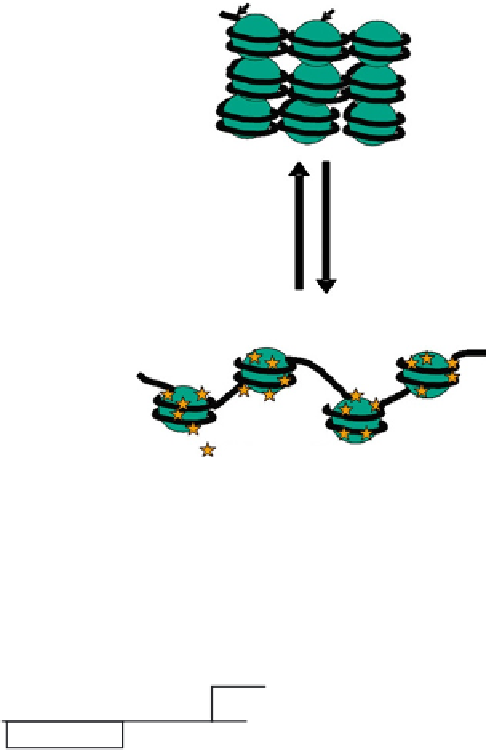Biology Reference
In-Depth Information
DNA
Nucleosome
Heterochromatin
Coactivator complexes
Loss of H1
Histone modifications
e.g., acetylation, phosphorylation, methylation
Histone methylation
Histone deacetylation
Corepressor complexes
Euchromatin
Histone modifications
Figure 4.3
Schematic representation of transition euchromatin-heterochromatin.
Source
: From
Adcock et al. (2006)
.
Repression
Activation
T3
Coregulators
Corepressors
T3
RXR
TR
RXR
TR
TRE____TRE
TRE____TRE
Figure 4.4
Mechanism of TR transcriptional control.
Abbreviations
: TR, thyroid hormone;
T3, triiodothyronine; RXR, retinoid X receptor; TRE, thyroid response element.
Source
: From
Moore and Guy (2005)
.
dimerizes, and binds to the ER response element, thus inducing transcription of
estrogen target genes (
Kim et al., 2001; Ruh et al., 1999
).
Upon entering the cell nucleus, the thyroid hormone (TH), especially in its trii-
odothyronine (T3) form, binds a TR isoform, changes its conformation, detaches
corepressors, and recruits coactivators (
Figure 4.4
). The TR-RXR dimer binds to the
T3 response elements (TREs) in the promoters of TR-regulated genes and recruits
coactivators (enzymes of acetylation, deacetylation, phosphorylation, etc.), making
possible the expression of TH-regulated genes. In the absence of the TH, its nuclear
receptor (TR) forms a heterodimer with the retinoic X receptor (RXR) and in this








Search WWH ::

Custom Search